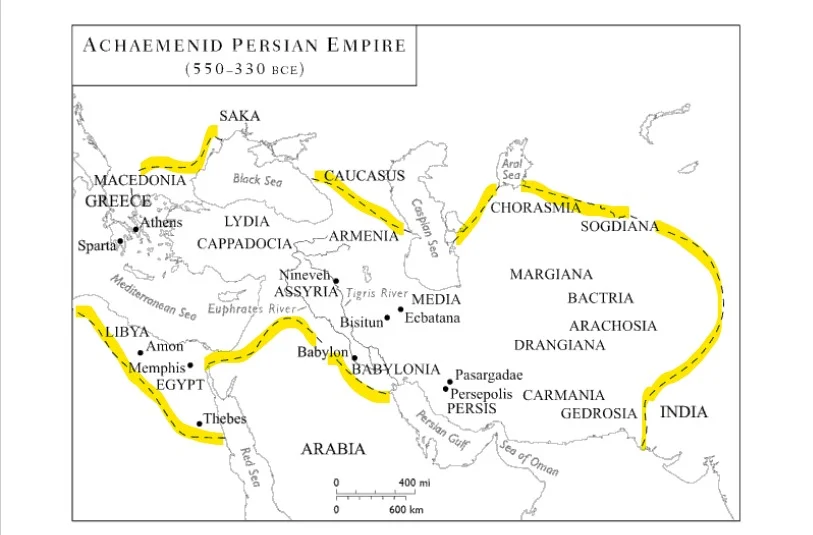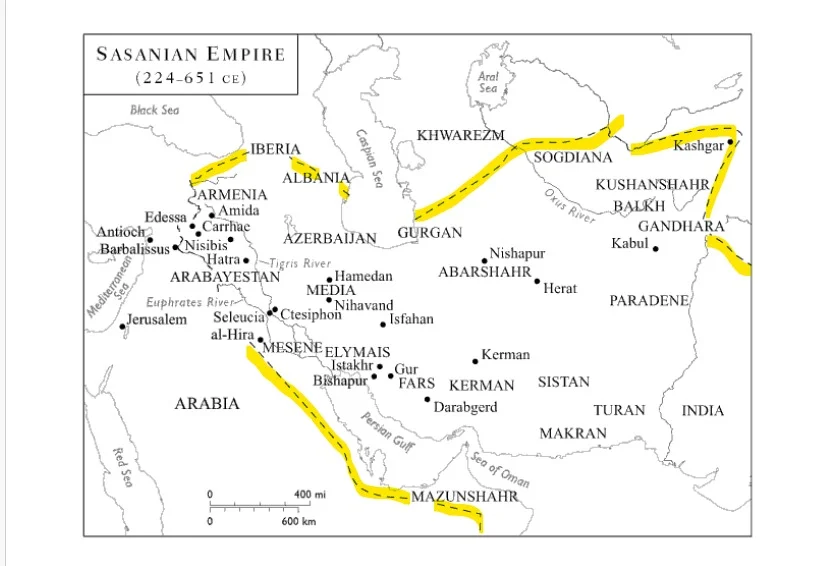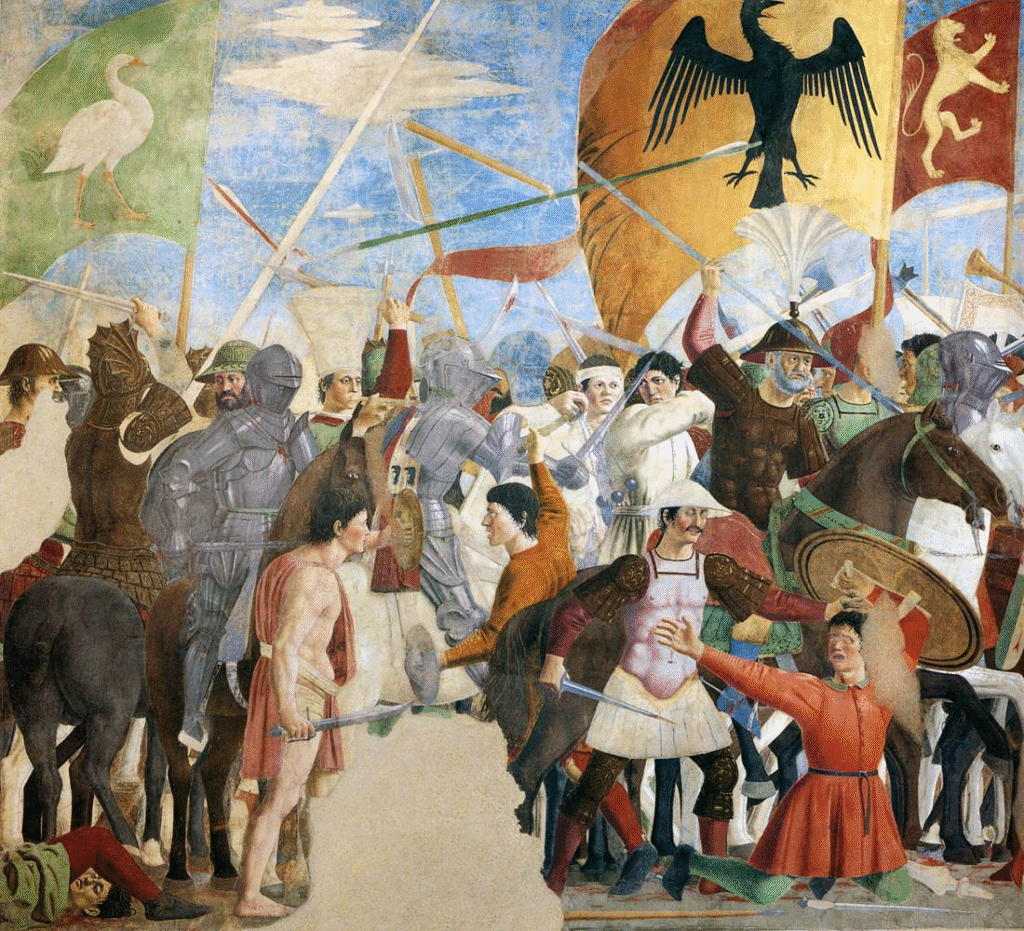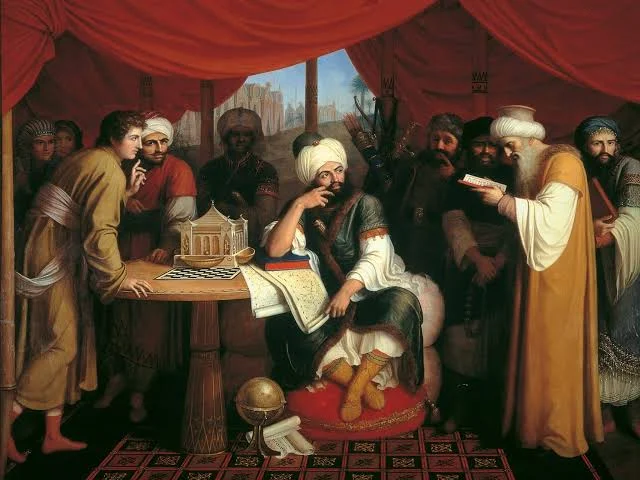Our series is concerned with the cultivation of human fruits in the land of Asia. We began with Persia, today reduced to the nation-state of Iran. Historically, Persian culture and political influence stretched far beyond its present boundaries, extending into Turkey, Iraq, the former Soviet republics, and Afghanistan.
The official name of today’s Persia, Iran, was decreed by Reza Shah Pahlavi in 1934 for both international and indigenous use.
We are following the trails and breadcrumbs left by the pioneers of civilisation. In the last episode, we discussed the rise of the empire in Persian lands, the Achaemenids and their glory. To put Persian history into perspective, it is important to assess the position of the Persian empires within the broader stages of history.
Persia in Prehistory
Historians generally divide prehistory into the Stone Age, Bronze Age, and Iron Age. This scale helps us anchor the story of Persia in the vast currents of history. Some scholars further subdivide the Stone Age to trace Persia’s prehistory. Archaeological evidence for the Paleolithic period (till c. 12,000 BCE) is sparse, but signs of hunters and gatherers exist. The presence of large water bodies in northern and southern Persia indicates early human settlement. The Pa Sangar cave in the Khurramabad plains shows evidence of early Stone Age habitation.
The Neolithic period marked the beginning of sedentary life and food production. Villages existed in Persia as early as 7000 BCE. By 6000 BCE, houses of mud brick appeared, typically with living and food preparation spaces. The Early Bronze Age (c. 3200–2200 BCE) saw the rise of pastoral nomads and sedentary agriculturists forming early polities. Between c. 2200–1600 BCE, urbanisation and interregional trade briefly flourished, linking Persia with neighbouring regions.
The Arrival of Iranian-Speaking Peoples
The Late Bronze Age and Early Iron Age (c. 1600–900 BCE) witnessed the migration of Iranian-speaking peoples, part of the broader Indo-European group, into Persian lands. By the Late Iron Age (900–550 BCE), they had mingled with non-Iranian peoples such as the Elamites.
Persian as the Second Literary Language of Islam
Modern Persian has absorbed a significant number of Arabic words and is not confined to Iran alone. Its variants include Tajik, the official language of Tajikistan, and Dari, widely spoken in Afghanistan. Persian has also left its imprint on Bukhara in Uzbekistan. For centuries, Persian was the court and administrative language of northern India
From Pahlavi (Sasanian Persian) to New Persian
After the Arab conquest, Sasanian Persian (known as Pahlavi) was gradually replaced by Arabic as the written language. Over time, however, New Persian emerged, becoming the second great literary language of Islam.
The Achaemenids: Persia in Glory
Returning to the pre-Islamic period, after the Elamites and the semi-mythical Avestan society, comes the first great limelight of Persia was the Achaemenid Empire. The second Achaemenid emperor, Cyrus II (Cyrus the Great), left a deep imprint not only in Persian tradition but also in Judaic, Christian, and Islamic sources. In Islamic texts, he is often identified as Dhulqarnain, the “Two-Horned One.”

Other Pre-Islamic Empires After the Achaemenids:
The Achaemenid Empire eventually fell to Alexander the Great after the defeat of Darius III, known in Persian sources as Dara. Following Alexander’s death, Seleucus emerged as a powerful figure, establishing the Seleucid Empire over Mesopotamia and eastern Iran. From Babylon (312 BCE), he extended his rule over Susiana, Media, and the surrounding regions. The Seleucids were succeeded by the Arsacid (Parthian) Empire, which reflected many traits of the Hellenistic and Roman worlds. Later, the Sasanian Empire replaced them, becoming Persia’s last great pre-Islamic dynasty.
The Sasanian Period
The Sasanian dynasty ruled Persia from the early 3rd century CE until the 630s. Their memory was preserved in the Shah-nama of Ferdowsi, which celebrated Persian heritage. Among the Sasanians, Khusrow I Anushirvan (Chosroes I) is remembered as one of the greatest monarchs.

His justice became legendary, and Muslim historians later hailed him as the model of a wise and just ruler. Khusrow, I also replaced centuries of decentralised governance with a centralised system

During the reign of Khusrow II (Parvez), Sasanian forces captured Syria, Alexandria, and even threatened Constantinople. Yet the Byzantine emperor Heraclius mounted a powerful counterattack, striking back deeply into Sasanian territory.

The Arab Conquest of Persia
The Sasanian Empire quickly succumbed to the advancing Muslim armies. Under Caliph Umar, the decisive Battle of Qadisiyya sealed Persia’s fate. During the Umayyad period, Islamic rule was consolidated. The conquest ushered in Persia’s integration into the Islamic world. Persian traditions and scholars played a crucial role in shaping the Islamic Golden Age.
The Abbasid Revolution
By the mid-8th century, unrest grew in Persia, particularly in Khurasan. This culminated in what came to be known as the Abbasid Revolution. Whatever its causes, its consequences were momentous. The new dynasty of caliphs transferred the capital of the Islamic empire from Damascus in Syria to the newly founded city of Baghdad. Though Baghdad was new, it rose not far from the ruins of Ctesiphon, the old seat of Persian power, symbolically bridging the old and the new.

In its early years, the Abbasid regime drew strength from its Persian supporters. The Khurasanian army, in particular, gave the dynasty its backbone and ensured its survival. Yet this reliance did not last. In the 830s, Caliph al-Mu‘tasim altered the composition of the army, replacing the Khurasanian forces with imported Turkish slaves. This marked a profound shift, one that not only changed the structure of the Abbasid military but also altered the political balance of the empire for centuries to come.
Persia, the Cradle of Intellect
Persia gave birth to phenomenal minds, poets, philosophers, mathematicians, and scholars. Its influence was so profound that the Abbasid Golden Age itself emerged as a grand synthesis of Arab and Persian traditions. Poets like Omar Khayyam, physicians and philosophers like Avicenna, mathematicians such as Al-Khwarizmi, and hadith experts like Imam Tirmidhi were all raised from its soil. Treasures we shall encounter as our journey unfolds.

